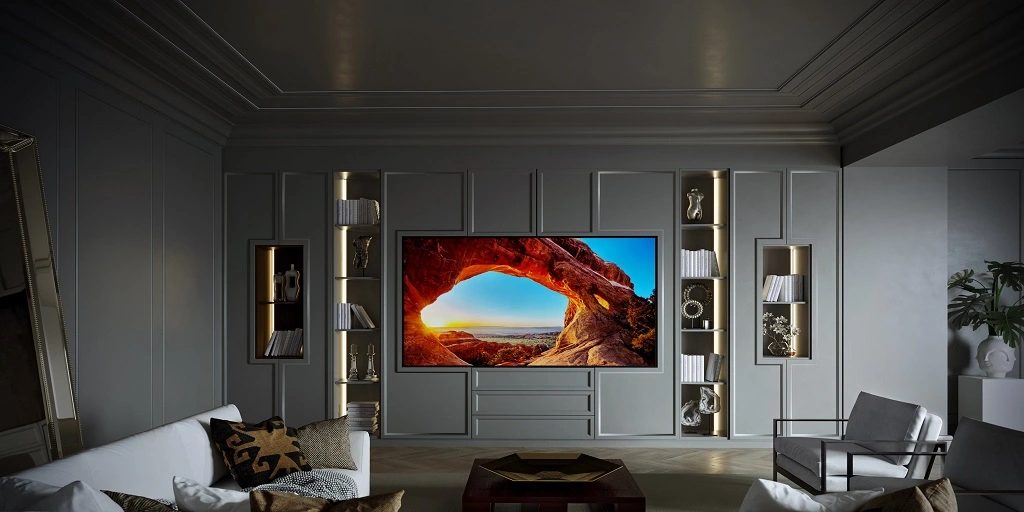Sony’s 2021 X85J is a middle-of-the-road 4K television. It’s the follow-up to the Sony X85H; the Sony X850G is the closest model to it that we’ve tried. It’s a great TV, especially for low-light settings, because of its high contrast ratio and consistent blacks.
Sony X85J is ideal for rooms with a lot of natural light, as its peak brightness and good reflection management are high. The new Google TV interface is comparable to the Android one featured on older Sony TVs, but it’s easier to use.
It features the same fantastic range of streaming applications, so you’re likely to locate your favorite streaming provider. After updating the firmware, players may use features including reduced input latency and increased bandwidth with HDMI 2.1. It also features great variable refresh rate (VRR) compatibility. Unfortunately, it does not offer local dimming, which would increase contrast in low-light areas.
Component specification details for the Sony X85J
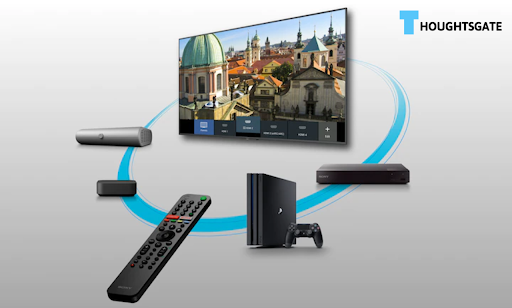
- The resolution of 3840 x 2160 pixels 4K UHD
- Panel Type: LED LCD, VA, XR TRILUMINOS PRO Display.
- Technical specification for typeface, LED backlight technology
- This TV doesn’t offer local dimming, meaning it won’t produce the best picture quality.
- The Processor is X1, 4K HDR Processor
- With a refresh rate of 960 and 120 motion clarity, the XR950 provides an immersive viewing experience.
- Experience brilliant colors and exceptional 4K HDR xTRILUMINOS Pro technology with the new MotionFlow XR 120
- Audio System 2.0, 20W X-Balanced Bass Reflex Speaker
- The analog audio output is on the left side.
- Amazon Alexa can be connected to any external Alexa device.
- Google Assistant support is available.
- This cabinet is W43″ x D37.95″ X H24.72″.
- Sony X85J weighs 71.9 pounds or 32.6 kilograms without the stand.
- The dimensions of the TV just so happen to be 85″ x 98.1 lb. (That’s 4,655 cubic inches).
Pros And Cons of Sony X85J
Pros
- Sony’s x85J provides fantastic contrast.
- The Sony x85J has a great response time.
- Sony x85J offers the most recent apps, which are ideal for mobile devices.
- Sony x85J can up-scale low-quality video into high-quality.
Cons
- Shadows from the Sony x85J are annoying.
Design Review of Sony X85J
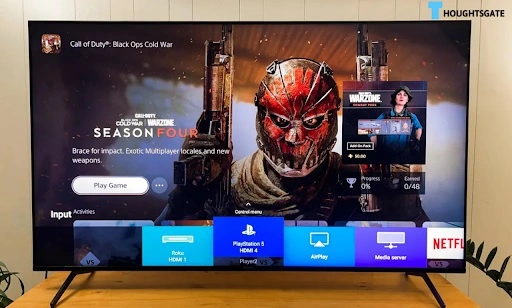
The X85J appears similar to the X90J. There are just two distinguishing features, but their similarities suggest that the two models share a standard shell. The X85J lacks the giant X on its back. However, the good point is its multi-audio system only has two tweeters instead of four, making it inferior to other models.
Overall, the device looks about as well as you’d expect from a TV in its price range, with decent quality by Sony’s standards but nothing particularly remarkable. The narrow borders help, though.
The thickness is around 2.8 inches (7.2 centimeters), which is the same as the X90J. But a little higher than we’d like in case wall mounting is essential to you. As annoying as having to turn your body every time you want to use the TV’s ports when it’s mounted on the wall.
From the back, the X85J looks almost the same as the X90J, except for the small changes. The ports that appear from the side are still on the right, and the power connector is still on the left. The squared-off shape of the plastic back panel is a welcome change.
A bench-style stand that runs the length of the TV, so you’ll need a sizable piece of furniture to set it on. And the TV’s design only allows for special clips that attach in the rear to keep all wires bundled together. Overall, the Sony X85J has met our expectations for quality.
Video Quality of Sony X85J
Technology utilized for processors
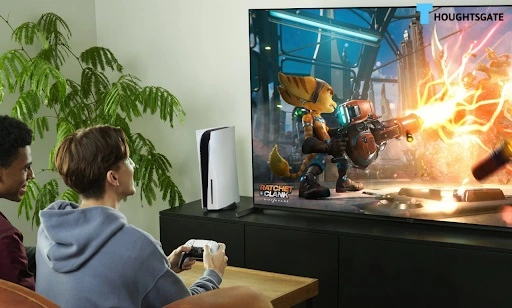
The X85J employs the identical 4K HDR Processor X1 seen in the X80J. The X800H’s CPU is similar to the one seen in several 2017 releases.
In contrast to typical TVs, which alter contrast along a single black-to-white contrast curve, the Object-based HDR remaster analyzes the color in specific objects and adjusts the difference accordingly. Due to its object-by-object remastering, this TV can display far more realistic images in depth, texture, and color.
The final option is 4K X-Reality PRO. The X85J’s use of advanced image processing technology allows stunning upscaling of information from any source to 4K. For each pixel, 4K X-Reality PRO determines the optimal hue, saturation, and brightness by comparing the pixel to a unique library of pixel patterns.
For this section of the evaluation, we put the device through its paces by subjecting it to a wide range of content, from low-resolution broadcast signals to high-resolution (1080p) films, and found that, for the most part, the upscaling worked without introducing any noticeable artifacts.
At this time, even the least powerful of these CPUs have impressive upscaling capabilities. As a result, there are no valid objections in this regard.
Sony X85J’s Screen Lightening Capabilities
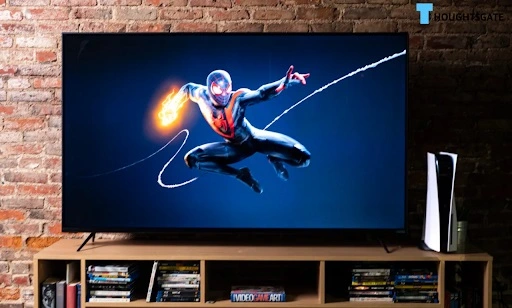
The Sony X85J employs a Direct LED lighting technology sans Local Dimming in favor of what Sony calls Frame Dimming. Keep in mind that the Sony Bravia x85j shares backlight across all sizes; there are no size-specific changes in this regard.
The Direct LED system uses illumination behind the provided VA panel; however, it is far less effective than a FALD system. Therefore the display’s brightness, light accuracy, and contrast will all suffer.
Direct LED technology has become increasingly widespread in recent years among TVs. The main reason for the popularity is the lower cost category, so we had low hopes for this set. The X85J’s usage of a VA panel with Direct LED lighting technology helps to reduce the likelihood of burn-in.
Quality of Brightness
The brightness of an HDR TV is a crucial feature. In our 10% white window SDR brightness test against a black background, the device delivered 533 nits of brightness when set to Custom Picture mode at maximum brightness. There aren’t any problems with the X85J’s intelligence because of the nature of SDR material.
The X85J achieved 575 nits on our 10% HDR test concerning peak brightness. The X85J employs a VA panel; thus, contrast is significantly improved, with blacks approaching deeper shades and not looking grayer than they are. You can’t ask for more from a TV at this price point, and it performs rather well while lacking local dimming is a bonus.
Sony X85j HDR compatibility
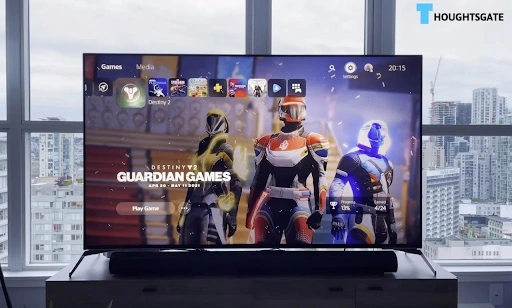
We are not surprised by Sony’s continued lack of HDR10+ or their apparent commitment to Dolby’s HDR standard.
The X85J supports the three most common HDR formats: the entry-level HDR10, necessary for 4K UHD viewing, the broadcast-friendly HLG, and the state-of-the-art Dolby Vision, which uses rich metadata to deliver the highest picture quality.
HDR10+ isn’t anything you should stress over if it doesn’t interest you. Dolby Vision offers far more comprehensive support at the moment, but with more and more titles beginning to support Samsung’s approach, it may be worth looking into in the future.
Aspect Color Ratio of Sony X85J
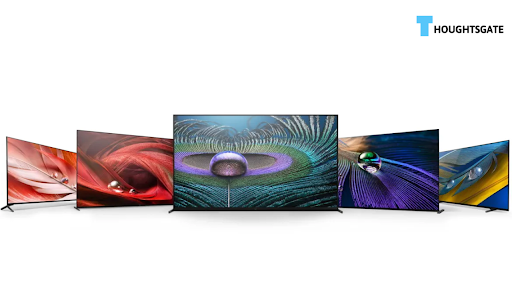
The X85J has broad color gamut support, one of the critical prerequisites for watching HDR content. Sony Bravia x85j helps make colors look more vivid and lifelike.
Technologies that allow for such a wide range of colors belonging to the same unit. Sony’s display is one such technology and shows a broader range of colors and more accurate tones than conventional LCD and LED screens.
The REC.2020 color space is wider than the sRGB space, and we got 68% coverage. In this regard, the X85J performed admirably. Its color accuracy was surprisingly high for a budget TV, and its gradients were incredibly smooth, with only very faint banding in a few instances.
The X85J performed admirably in this category generally. The color reproduction was surprisingly high-quality for a TV in this price range. In addition, the smoothness of the gradients was matched only by the occasional presence of minor banding.
Input parameters for gamers
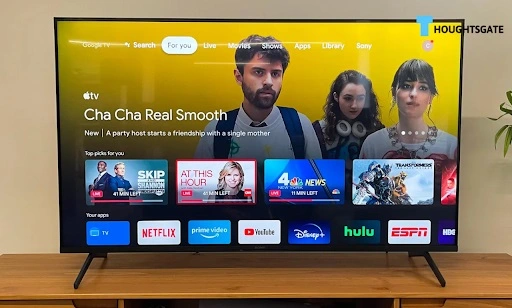
Using the Game mode of sony X85J, we achieved a very respectable 15.1 ms, which isn’t the lowest we’ve observed. However, it’s still low enough to provide smooth gameplay for even the most demanding gamers.
Our average latency was 86.7 ms when not in Game mode, which is excellent and, unexpectedly, better than the X80J and X90J.
Auto Low Latency Mode (ALLM) and other gaming-centric enhancements made possible by HDMI 2.1 are included in the package, making the newest game consoles even more enjoyable. If you want an affordable Sony TV with HDMI 2.1 but are concerned about the price, the X85J is your best bet.
Photography Quality
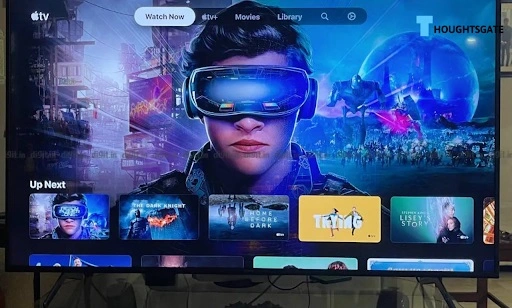
The VA panel does not work well for a wide viewing angle, so this TV is less than ideal for a large family. The brightness is too low to make HDR impressive, and the motion needs some calibration to find a good spot. The lack of VRR leaves us disappointed.
The TV may not be amazing initially, but the X85J is still a good buy. It has an excellent contrast ratio, stands out for its superb input lag, and provides satisfying brightness for the price. Remember the inclusion of HDMI 2.1 with features tailored toward gamers.
The VA panel does not work well for a wide viewing angle, so this TV is less than ideal for a large family. The brightness is too low to make HDR impressive, and the motion needs some calibration to find a good spot. The lack of VRR leaves us disappointed.
Sound clarity and intensity
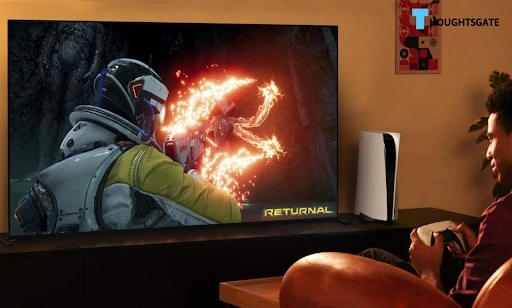
The audio system on this model is identical to the one on the X80J. Hence it lacks Acoustic Multi-Audio technology and has a weaker 20W output. This TV comes in various sizes, including the Sony Bravia 85-inch and Sony Bravia 43-inch, and they all offer essentially the same audio quality.
Sony has a long history of producing high-quality audio products, and they appear to have mastered the art of sound balance. Without significantly modifying the speaker configuration, they have enhanced the sound by utilizing a bass reflex system in conjunction with X-balanced speakers.
Sony’s solution for a thin TV speaker is the X-Balanced Speaker. With nothing to sacrifice music quality for its slimness, the uniquely formed X-Balanced Speaker combines the best of all worlds.
We often test out various forms of entertainment, and the built-in audio system works perfectly for everyday usage. While sports seemed excellent enough with remarkable depth and talk shows and news broadcasts had evident speech, movies offered the bare minimum. Get yourself a soundbar that is at least as potent as this one if you want to have any chance of losing yourself in a tale.
There was just front-facing motion, no significant overhead activity for surround effects, and no reduced density to give the audio detail a boost in strength.
Sony X85J Sockets and Connectors
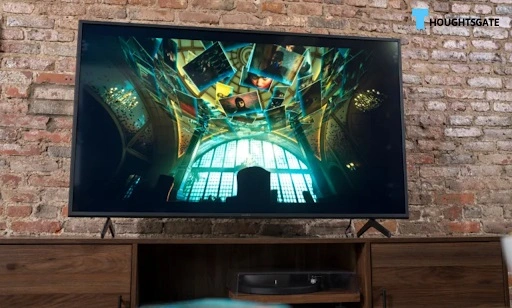
Sony X85J uses the layout of the same connections in many of its TV models, which we can also see in the Sony Bravia 65-inch and Sony Bravia 55-inch.
They are grouped on the right-hand side of the back panel and face sideways. These connections will make wall-mounting the TV easier because you’ll have access to all your ports.
One of Sony’s best features is an actual USB 3.0 port in most TVs, even their cheapest models. In contrast to other TV manufacturers, Sony usually provides a newer USB 3.0 port, even for many of their top-tier models. USB 3.0 port is a considerable advantage for Sony and a great reason you should consider them your go-to brand when it’s time to buy a new TV.
The TV has two HDMI 2.1 ports and two HDMI 2.0 ones. Although LG offers more HDMI 2.1 ports, it also has one HDMI 2.0 port that functions as ARC/eARC. If you need to use that, you will only have one HDMI 2.1 port available.
If you’re planning on using a second device that requires an HDMI port, be sure it can work with the older version of HDMI.
The new HDMI 2.1 ports offer several exciting new features, such as ALLM, VRR, and HFR.
On the wireless front, the X85J is loaded with WiFi (802.11ac) and Bluetooth v4.2.
The User Interface of Sony X85J
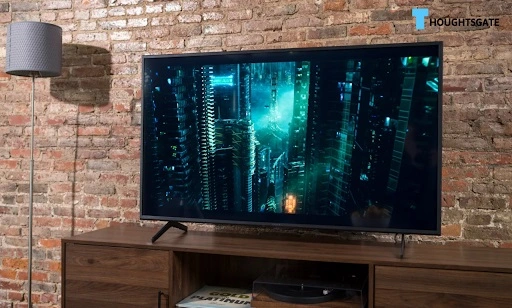
This TV’s user interface is nearly identical to that of the X80J. You receive the brand-new Google TV user interface with all the comfort and smoothness we observed if you still use Google Assistant to access the Play store.
Remember to use Enhanced format to ensure you receive 4K at 120Hz from both of your HDMI 2.1 ports. You may choose External Inputs from the Settinllowed by HDMI Signal Format.
FAQs
1. Is well the Sony X85J worth the cost?
A mid-range 4K LED TV with superb image quality is the Sony X85J. It performs well at dark levels, has excellent peak brightness, and has passable HDR capabilities.
Additionally, it offers perfect color accuracy and a large color spectrum. Its sole drawback is its prohibitive cost. Anyone seeking an excellent 4K LED TV should consider the Sony X85J.
2. Does the Sony X85J support 120Hz?
There is a lot of controversy surrounding the Sony X85J and whether or not it is a true 120HZ. Some people say it is, while others claim it isn’t. The truth is, we just don’t know yet. A few things to consider when determining if the Sony X85J is truly 120HZ.
First, you need to look at the refresh rate. A higher refresh rate means images will be refreshed more often, making for a smoother and more realistic image on the screen. That’s just some, though; for accurate 120HZ technology, you also need a good panel type to avoid blurring effects.
The main reason is the fast-moving scenes and the expensive price tag. This TV might be wrong if you’re looking for cheap but want tolerable quality.
3. What can I do to maximize my experience with the X85J?
With the Sony X85J, they offer a feature-rich TV to suit everyone’s demands. However, not everyone needs all the features. Here are some suggestions to help you get the most from your TV when you choose it: – To begin with, confirm that your TV is correctly calibrated by using a professional calibrator or following internet instructions. -You will need a streaming provider that provides 4K material if you wish to watch it.
Some excellent choices are Netflix, Amazon Video, and YouTube. You should attach your TV to an external 4K HDR source, such as a Blu-ray player or gaming console, for the highest picture quality and viewing experience.
A Quick Verdict
The Sony X85J will serve you well for your TV viewing needs. The absence of local dimming is a little letdown, given the TV’s excellent contrast and black uniformity, which make it ideal for viewing movies in the dark. The TV is great for viewing daytime shows and sports and works well for gaming because of its low input latency and quick response time.

Benjamin is tech-savvy and loves to research the highly dynamic technological world. Keeping track of all the tech stocks, tech inventions, and latest developments in the tech world keeps him firm.
He has been writing for the past 12 years and is currently connected with ThoughtsGate.com. Playing ice hockey with his childhood friends is what keeps him fresh.
